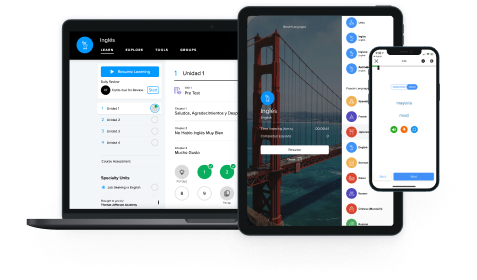You’ll need to use the and forms of both the indefinite article, as well as the negated form kein-, so read the sentences carefully! Are the blanks referring to a subject or a direct object?

Activities: “How to use indefinite articles in German?”
Activity 1: ‘So viele Fragen!’ (So many questions!)
Last night, Paul woke up with a start. His room was brightly lit and in front of his open window was a small spaceship. The spaceship contained an inquisitive little alien with only a rudimentary grasp of human life. Help Paul and the alien out by supplying the correct form of the indefinite article in the questions and answers below.
Tip
Glossary:
German | English |
|---|---|
der Anführer | leader |
der Erdling | earthling |
Example:
Alien: Was ist das? Ist das eine Lampe (f)?
Paul: Nein, das ist keine Lampe (f), das ist ein Handschuh (m).
Your turn!
Alien: Was ist das? Ist das Schuh (m)?
Paul: Nein, das ist Schuh (m), das ist Radio (n).
Alien: Und das? Ist das Kind (n)?
Paul: Nein, das doch Kind (n)! Das ist Katze (f)!
Alien: Ich sehe dort Hund (m)! Wie interessant!
Paul: Nein, das ist Hund (m). Du siehst dort Stuhl (m)!
Alien: Ich wollte so gern Blumenvase (f) sehen und dort ist eine. Hurra!
Paul: Nein, das ist Blumenvase (f), sondern Tasse (f).
Alien: Bist du Anführer (m), Erdling?
Paul: Nein, ich bin Anführer, ich gehe noch zur Schule!
Activity 2: ‘Märchenmischmasch!’ (fairytale mix-up)
Anna loves fairytales, and as usual, she read several of them right before bed last night. When she woke up in the morning, she tried to tell her mom about the fairytale dream she had — all the fairytales had been mixed up. Help Anna tell her mom about the dream by picking the correct form of the indefinite article.
Tip
You’ll need to look closely: the indefinite article might refer to a subject, a direct object, an indirect object, or a genitive attribute. You might also see dative prepositions like mit(with) and zu(to), or accusative prepositions like für(for) and durch(through). The gender of each noun is shown in parentheses.
Example:
Ich habe ein / eine / einen Tiger (m) gesehen.
Glossary:
German | English |
|---|---|
der Zwerg | dwarf |
die Fee | fairy |
das Pferd | horse |
das Fell | fur |
Now, spot the correct indefinite article in the sentences below.
- Mama, zuerst war da ein / einem / einen freundlicher Zwerg (m). Er hat mir einen / eine / einer rote Blume (f) geschenkt.
- Dann habe ich die Blume einem / einer / eines netten Frau (f) geschenkt. Die Frau war ein / einer / eine Fee (f)!
- Sie hat mit der Blume einer / ein / einen wunderbares Pferd (n) herbeigerufen. Ich wusste nicht, dass das Fell einer / einen / eines Pferdes (n) aus purem Gold sein kann!
- Ich bin auf dem Pferd geritten, bis ich zu eine / einem / ein kleinen Haus (n) gekommen bin. Im Haus wohnte eine / eines / einer alte Frau (f) und ein / einer / einen grauer Wolf (m).
- Ich bin mit der alten Frau und dem Wolf durch einen / ein / einer tiefen Wald (m) gelaufen. Dann hat der Wolf mir einen / eine / einem leckeren Kuchen (m) gegeben. Ich habe ihn gegessen und bin aufgewacht.
